 |
 |
 |
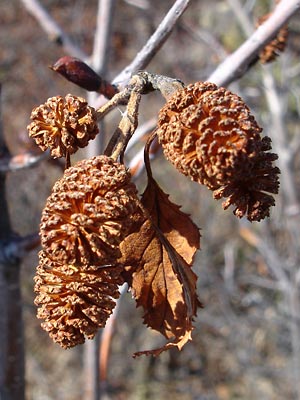
1. Early May. Alder cone from previous
year.
|
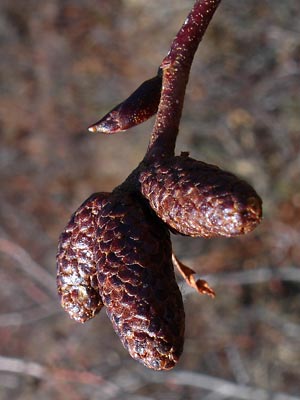
2. Early May. Male catkin which formed
in mid-summer of previous year, see
photo 10. Bud at top is probably a
female catkin bud.
|
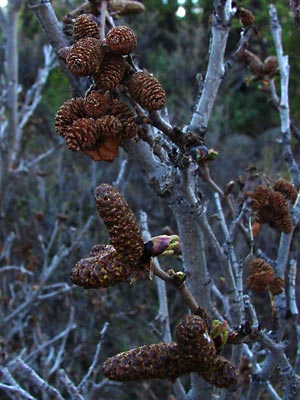
3. Late May. Cones from preceding year.
Male catkins. Female catkins emerging from
buds and leaf buds just opening.
|
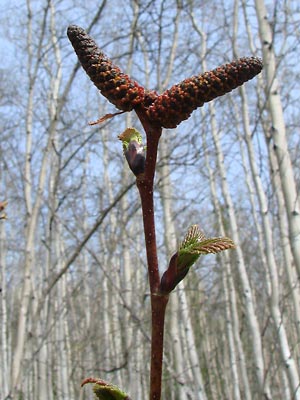
4. Late May. Male catkin beginning to
bloom with young leaves emerging
from buds.
|
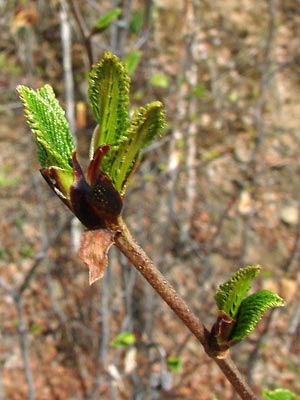
5. Late May. Young leaves emerging
from buds.
|
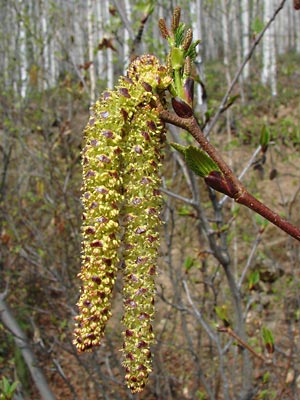
6. Late May. Male catkins in bloom
with female catkins and leaves emerging
from upper bud and young leaves
emerging from lower bud.
|
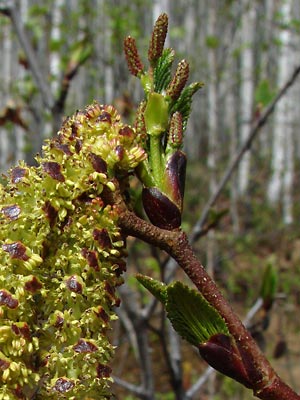
7. Late May. Close-up of 6.
|
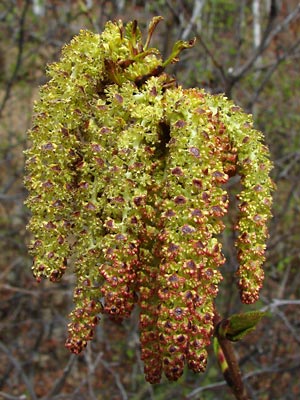
8. Late May. Large group of blooming
male catkins.
|
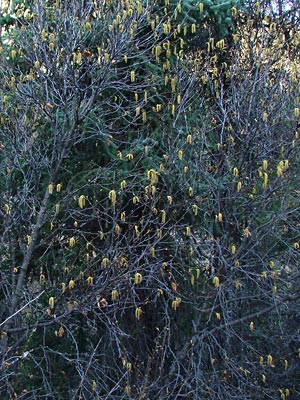
9. Alder shrub with blooming male
catkins.
|
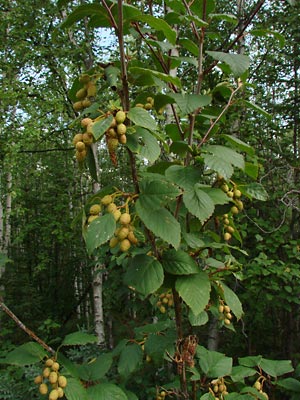
10. Late July. See right for full description.
|
Photo 10.
Fully-leaved alder shrub with cones
from last year and new developing cones
from this year.
Also visible are green male
catkins which will bloom the following
year and the remains of a male catkin
which bloomed this year.
Leaves and female structures are on
petioles while male parts are attached
directly to stems.
Also there is a rolled leaf at the upper
left of the photo.
|
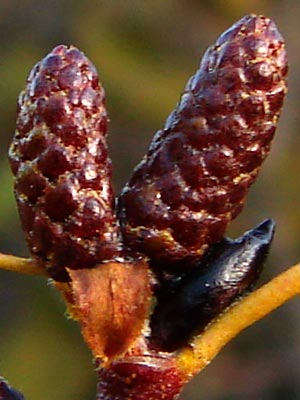
11. Mid-September. Male catkins, now brown.
which will bloom in the spring. Also a black bud
which will develop into female catkins and leaves
in the spring.
|
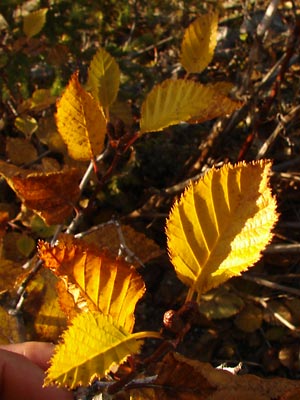
12. Mid-September. Leaves in fall color.
|
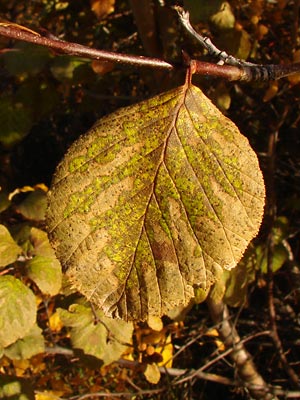
13. Mid-September. Another leaf which
began decomposing before yellow
color could be seen.
|
Photos 1-13 were taken of shrubs along
roads.
Photos 14-17 were taken in early September
of plants in the deep woods.
The plants in wooded areas often grow to
considerable size. The vertical trunk in
15 had a diameter of approximately 6 inches.
Groups of alders usually do not have
vertical trunks. This is seen in photo 14.
Sometimes the trunks are almost
horizontal for several feet before tending to
become vertical.
Also the leaves in the deep woods tend to
begin decomposition before the fall color
can develop as seen in photo 17.
|
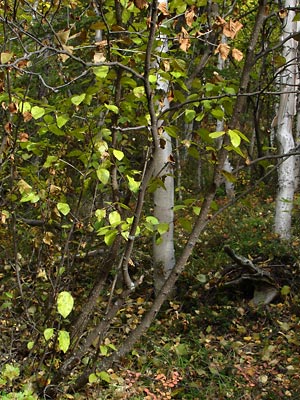
14.
|
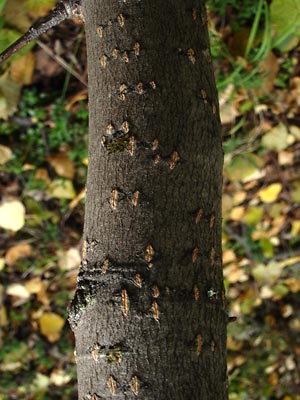
15.
|
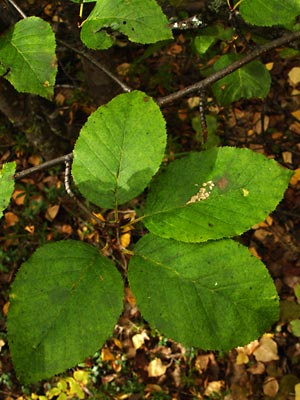
16.
|
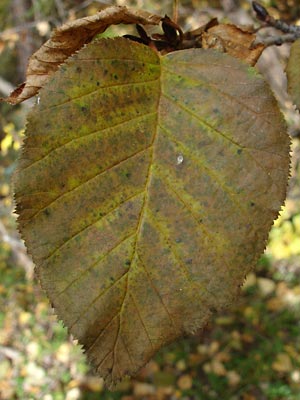
17. Leaf in state of decomposition
while still on the tree. Note dried leaves
in the background.
|
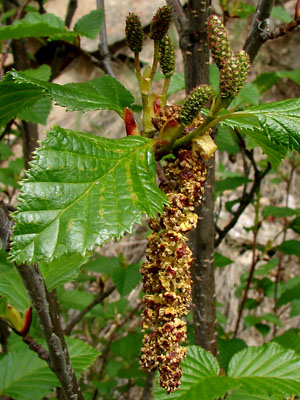
18. June 2, 2011. Male and female catkins
with young leaves and buds.
|
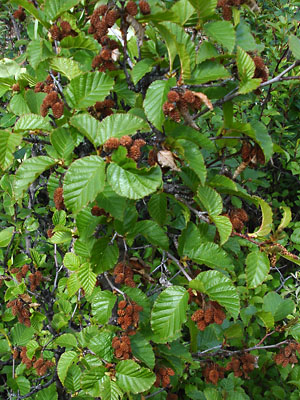
19. June 11, 2011. Plant with many
clusters of cones from the previous
year .
|
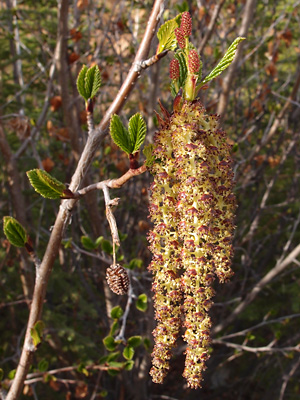
20. May 24, 2012. Drooping male catkins,
smaller upright female catkins, and emerging
leaves.
|
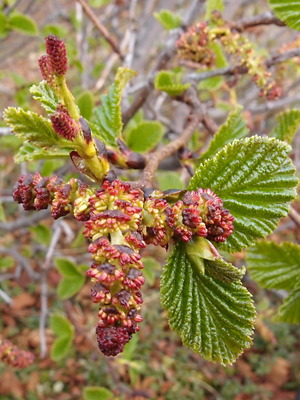
21. June 9, 2012. Similar to photo 20, however
the leaves are at a later stage while the male
catkins are at an earlier stage.
|
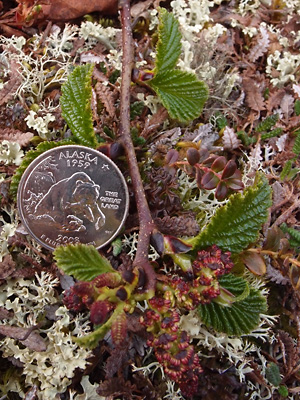
22. June 9, 2012. Close-up pf a flowering twig
with a coin for comparison..
|
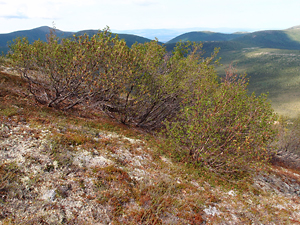
23. June 9, 2012. Deformed alders on a
windswept hilside
|
Photos 14-17 taken above the
granite tors along Bottom Dollar Creek
above the confluence with Half Dollar Creek.
65° 25.3' N, 144° 48.6' W
Elev. 2000 ft.
Photo 18 taken above upper Bottom
Dollar road
Latitude: N 65° 25' 21.0"
Longitude: W 144° 48' 52.8"
Altitude: 559.1 m.
Photo 19 taken at approximately 9 mile
Portage Creek road.
65°26' N, 145°47' W Elev. 2000 ft.
|
Photos 21-23 taken 1.5 miles
southwest of Portage Summit.
Latitude: N 65° 24' 44.0"
Longitude: W 144° 45' 10.0"
Altitude: 973 m.
|
| |
|
|
| |
|
|
| |
|
|
| |
|
|





















